8 Best Mobile Ad Networks for Publishers in 2025
Mobile ad networks are intermediaries that connect advertisers with app publishers. For publishers the main advantage of mobile ad networks is the seamless integration and automation of ads into their app, providing a steady flow of income without detracting from the user experience.
Whether you’re a beginner or already experienced publisher seeking to maximize the potential of an existing app, the choice of an ad network can make all the difference.
Our article highlights the 8 top mobile ad networks to help you with your decision-making process.
What are Mobile Ad Networks?
A mobile ad network is a platform that connects advertisers with publishers (app developers) who want to monetize their apps. Mobile ad networks are useful for both–publishers looking to monetize their app by selling ad space and advertisers wanting to increase user acquisition by buying ad space.
There are different types of mobile ad networks. The best ones ensure fair rates, high eCPM, targeted audience, high-quality ads and more.
With a mobile ad network, publishers sign up for the network and are paid for providing ad space within their apps. The network then aggregates the ad space provided by all publishers on the system and sells it to advertisers.
Types of Mobile Ad Networks
Traditional networks vs bidding-based networks
There are two mobile ad network types. Both of them provide connections between advertisers and a publisher’s mobile ad inventory, but one requires less manual oversight.
Here are some key differences between traditional and bidding-based mobile ad networks:
| Traditional networks | Bidding-based networks | |
| What are they? | Networks where ad space is sold through direct sales or fixed pricing models, often with rates set in advance. | Platforms that use real-time auctions to sell ad space, where multiple advertisers can place bids for impressions. |
| Pricing model | Operate on a fixed pricing model, where the advertiser pays a set price for a specific number of ad impressions or clicks. The price is determined by various factors, such as ad placement, targeting, and ad format. | Operate on an auction-based pricing model, where advertisers bid in real-time for ad inventory. Advertisers set their bids based on their budget and the value they place on reaching a specific audience. The highest bidder wins the auction and their ad is displayed to the user. |
| Targeting | Targeting is based on a predefined audience, which might not always align perfectly with the advertiser’s target demographic. | Allow for more precise targeting, as advertisers can set bids based on specific user data. |
| Transparency | Rates are often not flexible and it can be unclear what factors affect the cost. | Provide greater transparency, as advertisers can see the real-time cost of ad inventory and adjust their bids accordingly. |
| Flexibility | Advertisers may need to commit to a set budget and ad placement upfront. Changes can be difficult to implement once a campaign starts. | Offer more flexibility, as advertisers can adjust their bids in real-time based on performance metrics. |
Incentivized vs. non-incentivized
Incentivized and non-incentivized ads represent two strategies for engaging users with advertising content. Each has its own set of expectations regarding user interaction.
- Incentivized ads are ads where the user is given a clear motivation to interact with the ad content. The incentive is usually a tangible reward within the context of the app or service they’re using. For example, in mobile games, users may be offered in-game currency, items, or extra lives if they watch a video ad or complete a survey.
The key here is an exchange – the user’s time and attention for a reward.
This can lead to high engagement rates, as users directly benefit from watching or interacting with the ad. However, the engagement quality may be lower, as users are primarily motivated by the reward rather than genuine interest in the advertised product or service.
- Non-incentivized ads are traditional forms of ads where no direct reward is offered to the user for their engagement. The ads appear as banners, videos, or interstitials that users can watch or skip without receiving in-app benefits.
The expectation is that the ad’s content is enough to draw the user’s interest and potentially lead to a conversion, like installing an app or making a purchase.
The engagement quality is generally higher since any interaction suggests genuine user interest. However, engagement rates might be lower compared to incentivized ads because there’s no immediate reward for interacting.
How Mobile Ad Networks Differ From Ad Exchanges and SSPs?
Each of these entities have distinct functions that cater to the needs of publishers, advertisers, and agencies in the process of buying and selling ad inventory
- SSPs are focused on serving publishers, helping them manage and optimize the sale of their ad inventory to maximize revenue.
- Ad exchanges are automated platforms that facilitate the buying and selling of ad inventory.
- Ad networks serve as intermediaries, connecting advertisers with publishers, and can offer a mix of SSP and DSP functions. They aggregate and segment ad inventory for sale, providing a controlled marketplace for advertisers and publishers.
To explain more in depth the roles and distinctions between mobile ad networks, ad exchanges, and SSPs, let’s break down each one:
SSPs (supply-side platforms)
SSPs are designed to serve the interests of publishers. They help publishers manage their ad inventory, optimizing the sale of ad space to maximize revenue. SSPs are directly connected to publishers and offer tools and services that help in yield optimization and other aspects beneficial to publishers.
Here are 4 main characteristics of SSPs:
- Direct relationships with publishers, or through a programmatic advertising network.
- Aggregates publishers’ ad inventory and makes it available to demand partners like DSPs and ad exchanges.
- Offers tools focused on yield optimization and other publisher-centric services.
- Typically has higher gross margins due to additional services offered.
Ad exchanges
Ad exchanges act as digital marketplaces that facilitate the buying and selling of ad inventory between publishers (through SSPs) and advertisers (through DSPs). They are mainly used for remnant inventory, which refers to unsold ad space that is not as valuable.
Here are 4 main characteristics of ad exchanges:
- Does not necessarily have direct relationships with publishers. Instead, it aggregates supply from SSPs.
- Serves more as a transactional platform rather than providing tools and services to publishers.
- Functions like a stock exchange for ad inventory, focusing on high volumes of transactions.
- Customers are typically DSPs, focusing on facilitating transactions rather than offering optimization services.
Ad networks
Ad networks act as intermediaries that connect advertisers with publishers. They can perform functions of both SSPs and DSPs to some extent.
Ad networks aggregate publishers’ ad spaces, segment them based on various factors like geography, age, gender, etc., and then sell these to advertisers.
Here are 4 main characteristics of ad networks:
- Can have direct relationships with both publishers and advertisers, as well as DSPs and SSPs.
- Saves publishers time and resources by providing ad serving and tracking capabilities.
- Acts as a broker for ad space, enabling advertisers to buy space across multiple sites within the network.
- Offers a controlled marketplace for the buying and selling of ad inventory, often handling a mix of premium and remnant inventory.
Mobile App Advertising Benefits
Mobile or in-app advertising provides a better user experience than display advertising on the mobile web. With display advertising the ads can get compressed and look unappealing to mobile users. Mobile ads fit the mobile screen and look better.
Since most of us have our phones with us almost all the time, it brings a significant advantage with accessibility. It’s easy to reach users with in-app advertising, and there’s a higher chance to captivate the audience already engaged with your content.
Additionally, it’s possible to target users based on their device’s location data. Mobile targeting can be done in real-time, allowing advertisers to send targeted messages to users based on their location. This makes mobile development consulting particularly valuable, as experts can guide businesses in optimizing their development as well as in-app advertising strategies effectively.
Here are 5 more benefits of using mobile app advertising:
- Mobile apps have higher conversion rates than the mobile web.
- Ad blockers are used less within mobile apps.
- Apps have a better user experience and ad engagement.
- Users spend more time on mobile apps than they do on the web.
- In-app advertising allows a more precise user targeting and can be more personalized due to the use of first-party data.
8 Best Mobile Ad Networks
1. Google AdMob
Google AdMob is one of the largest players in the market. Similar to other Google products, AdMob is really easy and intuitive in usage. AdMob has high-quality ad demand for all the most popular ad formats, including native, rewarded, interstitial, and banner ads. It supports multiple currencies and allows ad-based monetization of apps of all types and sizes.

Payment model: CPM
Requirements: Anyone can get started with AdMob as long as their app is compliant with the site’s content policies.
Pros and cons
Google AdMob provides easy app integration. It offers access to 30+ premium ad networks and demand sources, automatic audience segmentation and customizable creative templates. Therefore, it’s a good starting point if you’re a beginner.
However, it’s not the most profitable option for small publishers with low traffic. It’s been criticized by users for revenues being on the lower side of the chart. Also, the payout minimum is pretty high–$100.
Top features
Some of the top features of AdMob include:
- Support for the most popular mobile ad formats
- Detailed analytics
- Real-time bidding
- Brand-safety tools
2. SmartyAds
SmartyAds is an all-in-one programmatic ad network with a proprietary SSP, DSP, and ad exchange. It provides access to both open and private marketplaces so they can maximize their earning potential. Additionally, they offer detailed reporting, so publishers can keep track of their auctions.
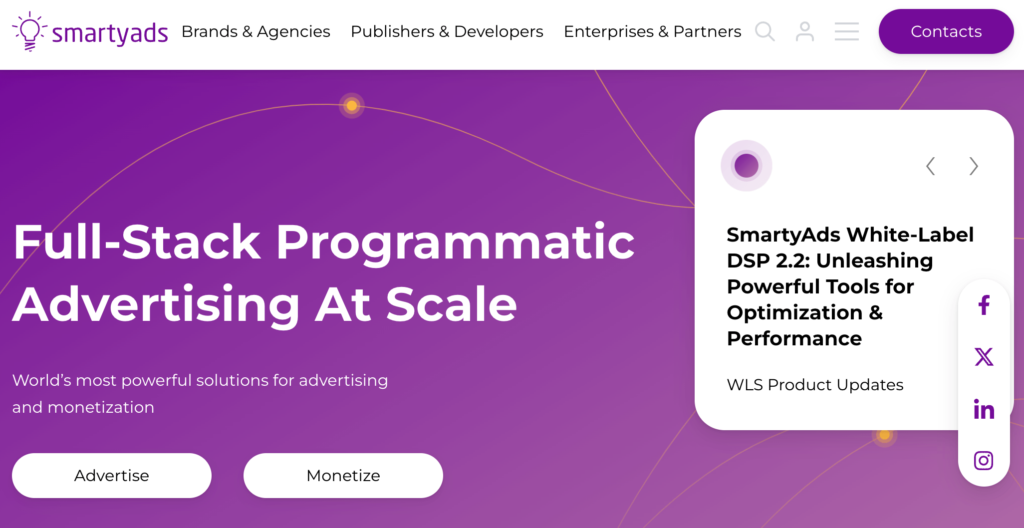
Payment model: CPM
Requirements: 300,000 monthly views
Pros and cons
SmartyAds offers a full-stack ad platform complete with an ad network and other monetization tools, sophisticated reporting tools and user-friendly SSP dashboard and advanced header bidding technology for better eCPMs.
However, they have a high traffic threshold for publishers.
Top features
Some of the top features of SmartyAds include:
- Wide range of ad formats
- Open and private marketplace
- In-app and server-side header bidding
- In-depth analytics and reporting
3. AppLovin
AppLovin is a mobile monetization platform with 100+ advertising integrations and partners. It includes real-time app analytics and supports different types of ads, such as banners, skippable and non-skippable videos, playable ads, and rewarded videos.
Additionally, AppLovin comes with an array of brand safety tools designed to detect and report problematic content and ads.
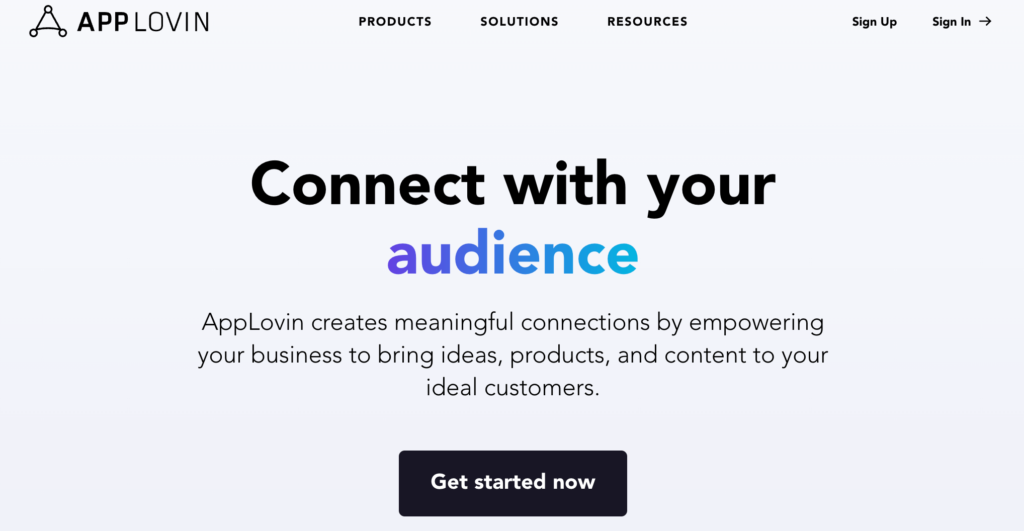
Payment model: CPM, CPE, CPR, CPP, CPO
Requirements: N/A
Pros and cons
AppLovin is noted to have a lightweight SDK with waterfall setup and a great display of analytics. However, some of the users have mentioned their dissatisfaction with their eCPM and low fill rates.
Top features
Some of the top features of AppLovin include:
- Support for popular mobile ad formats
- Real-time AB testing tools
- Detailed analytics and reporting
- Brand safety tools
4. Equativ
Equativ is an all-in-one solution for publishers looking to monetize their apps. One of its biggest benefits is the support for a wide array of ad formats. The platform relies on contextual targeting, making it a great choice for cookieless environments.
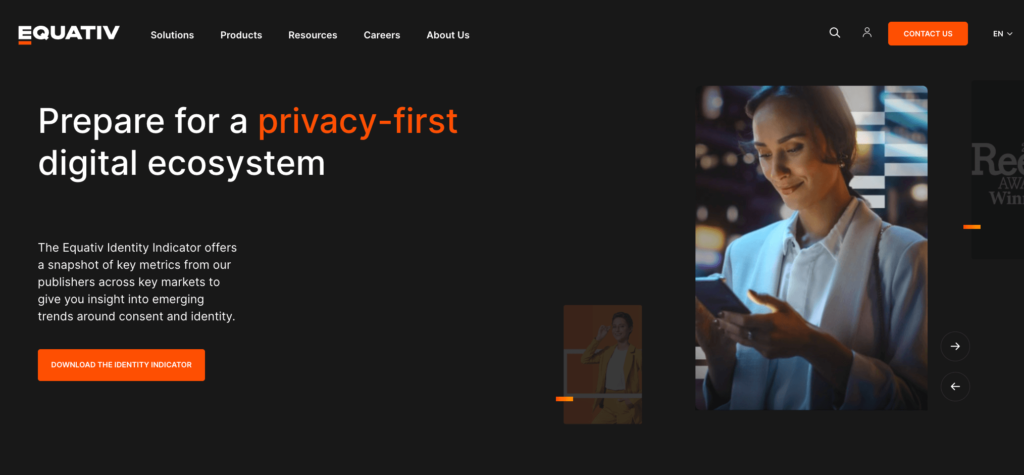
Payment model: CPC
Requirements: N/A
Top features
Some of the top features of Equativ include:
- A variety of mobile ad formats
- Contextual ad targeting
- Ad quality and brand safety tools
- Header bidding technology
5. PubMatic
PubMatic is primarily an OTT advertising platform with support for cross-device monetization, including mobile apps. It allows publishers to implement all types of mobile ad formats, from regular banner ads to rich media ads. PubMatic uses header bidding technology and offers detailed ad and audience analytics.
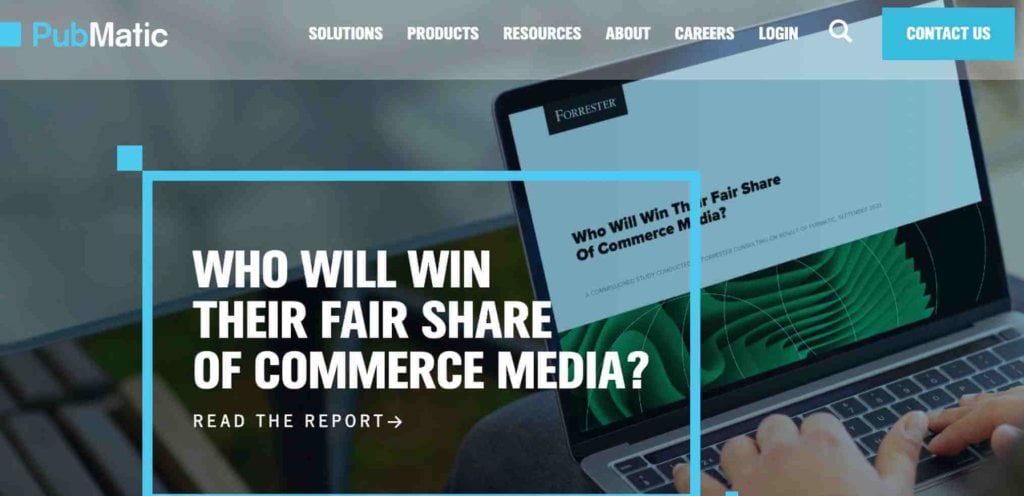
Payment model: CPM, CPC, CPE
Requirements: N/A
Top features
Some of the top features of PubMatic include:
- Open and private marketplaces
- Detailed ad and audience analytics
- Proprietary SSP
- Premium ad demand
- Header bidding technology
6. Smaato
Smaato is an ad tech platform that relies on real-time bidding and other programmatic methods (e.g., programmatic direct). Additionally, It has strict anti-fraud and ad quality systems in place to ensure brand safety.
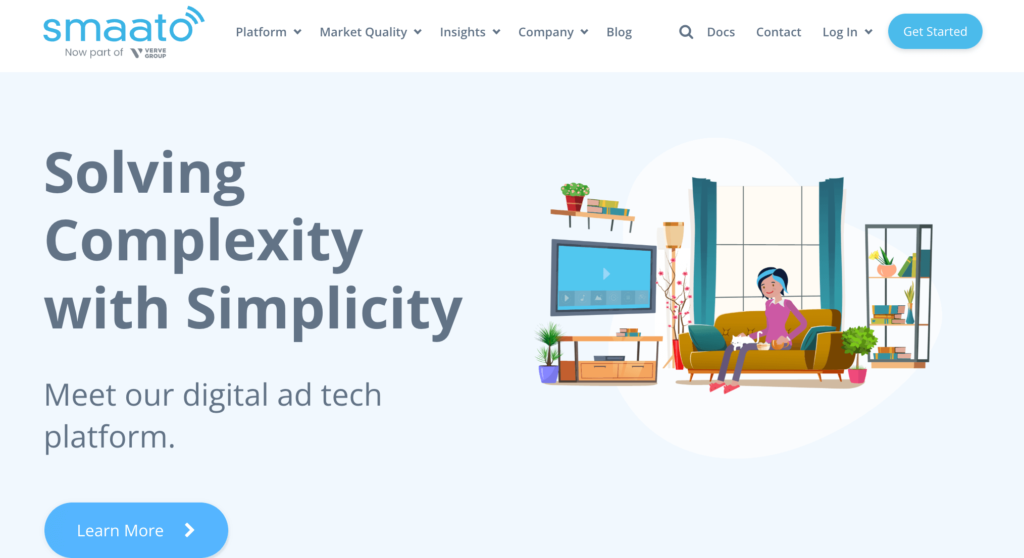
Payment model: CPM
Requirements: N/A
Pros and cons
One of Smaato’s major benefits is its proprietary ad server that grants publishers more control over their inventory and a better audience reach. Smaato provides access to an open marketplace without any requirements for subscription.
However, some users have found the user interface cluttered and difficult to navigate, leading to a poor user experience. The platform can be overwhelming and confusing.
Top features
Some of the top features of Smaato include:
- Header bidding and programmatic deals
- Wide array of ad network integrations
- Built-in ad server and ad marketplace
- Fraud prevention features
7. InMobi
InMobi is a mobile advertising network designed both for publishers and advertisers. It comes with an array of ad formats such as rich media and playable ads, and provides publishers with access to diverse ad demand from hundreds of DSPs. Additionally, InMobi offers in-app monetization, ad mediation, and audience bidding.
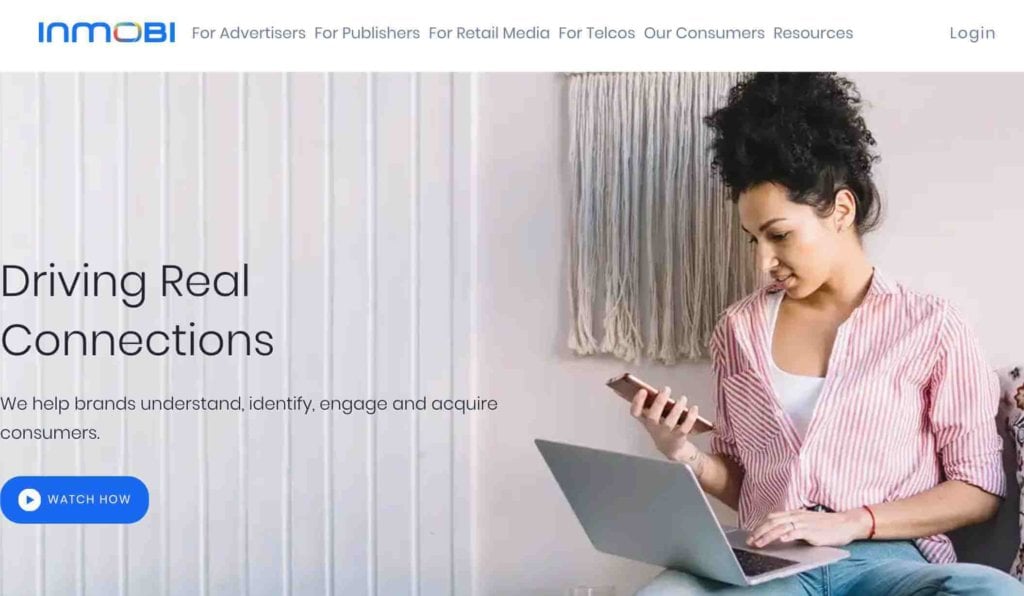
Payment model: CPM
Requirements: N/A
Pros and cons
Some of the main benefits are that InMobi offers access to premium, global demand, and has one of the industry-leading mobile SDKs.
On the downside, users have mentioned InMobi has a limited inventory. They feel restricted in terms of ad options and reach, which hinders their ability to maximize revenue potential.
Top features
Some of the top features of InMobi include:
- Advanced audience targeting and filtering
- Wide selection of ad formats
- Proprietary ad exchange
- User ID management solutions
8. Media.net
Media.net is one of the largest advertising companies in the world. Their main selling point is well-targeted contextual native advertising with dynamic ad optimization. It also features a marketplace where publishers can access high-quality ad demand through real-time bidding and direct deals.
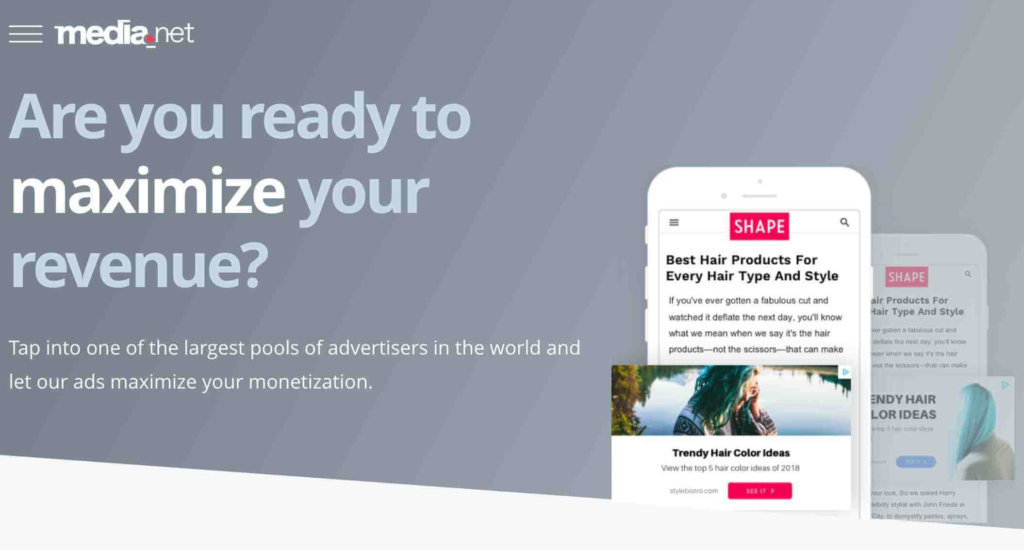
Payment model: CPM, CPC, CPA
Requirements: 10,000 page views per month. However, they also mention that they accept sites with lower page views.
Pros and cons
Media.net is considered among the highest paying contextual ad networks and one of the best alternatives for AdSense.
However, Media.net requires website traffic in 3 countries only (UK, US and Canada). Some users have reported that they don’t update the revenue in real-time, and sometimes their ads require double clicks from website visitors for publishers to earn from these ads.
Top features
Some of the top features of Media.net include:
- Contextual targeting
- Dynamic ad optimization
- Premium demand marketplace
- Real-time bidding and direct deals
How Do Mobile Ad Networks Work?
Mobile ad networks operate similarly to traditional ad networks, making the transition straightforward for those already familiar with ad network dynamics. However, their integration and functionality are tailored to mobile applications and their unique ecosystems.
To monetize their apps, publishers must embed the ad network’s SDK into their application. This SDK enables the collection of ad inventory from integrated apps and facilitates its sale to advertisers seeking targeted audiences.
Here are 4 steps that explain the process of how mobile ad networks work:
- SDK integration. Initially, the publisher integrates the mobile ad network’s SDK into their app, which involves adding the network’s code library into the app’s codebase. This integration allows the ad network to collect ad space (inventory) from the app.
- Data collection. Post-integration, the ad network collects data from the app, such as device IDs and user behavior. This data is crucial for understanding the demographics and preferences of the app’s user base, allowing for more effective ad targeting.
- Ad matching. The collected data is processed by the ad network’s server, employing algorithms to analyze user information. This analysis matches the app’s inventory with advertisers’ criteria, ensuring that the ads served are as relevant as possible to the user’s interests and behaviors.
- Ad delivery. Finally, the ad network executes the match, serving the selected ad to the appropriate user. This step focuses on optimizing the ad’s performance by selecting campaigns likely to generate the highest engagement and revenue.
Mediation platforms: integrating multiple ad networks for optimal fill rates
A mediation platform prioritizes and fills ad impressions with the highest bidder, significantly enhancing revenue potential. The core of a mediation platform’s efficiency lies in its auto-optimization algorithm.
Based on real-time performance data, auto-optimization dynamically adjusts which ad sources are called and in what order. This ensures that the highest-paying ads are always prioritized, leading to increased fill rates and, ultimately, higher revenues for publishers.
One of the standout benefits of adopting a mediation platform is simplified SDK management.
Integrating multiple ad networks requires embedding each one’s SDK into the app, which can lead to SDK bloat. This bloat can adversely affect the app’s performance and user experience, resulting in longer loading times, increased battery consumption, and higher data usage. Mediation platforms address this issue by consolidating multiple ad networks under a single SDK integration.
Additionally, mediation platforms offer advanced analytics and reporting features, providing publishers with deep insights into ad performance across different networks and formats.
How do ad networks match ads to the right audience?
Mobile ad networks use sophisticated algorithms and data analytics to match ads with the right audience. They leverage user data such as demographics, interests, behavior, location, and more to segment audiences and ensure that advertisements are served to users most likely to be interested in the product or service.
This targeting capability is crucial for advertisers seeking to maximize the impact of their campaigns and for publishers aiming to deliver relevant ads to their audience, enhancing user experience and engagement.
From CPM to CPA, how publishers earn money?
Publishers earn money through various models facilitated by mobile ad networks:
- CPM: Publishers are paid for every thousand ad impressions displayed on their app or website. This model benefits publishers with high traffic volumes.
- CPC: Earnings are based on the number of clicks an ad receives. This model encourages the placement of ads in a way that they are more likely to be clicked.
- CPA: The most profitable model, where publishers earn a commission when users take a specific action. Advertisers prefer this model for the direct correlation with tangible outcomes.
- CPI: Advertisers pay a fixed fee for every app install generated from an ad click. This model is chosen by publishers to generate a large number of new users that visit their app, increasing visibility.
Real-time bidding and programmatic buying
RTB and programmatic facilitate the ad buying and selling process by automating it. Both technologies enable more efficient transactions, better pricing models, and improved targeting for advertisers, while publishers benefit from higher fill rates and revenue.
In RTB, ad impressions are auctioned in real-time and advertisers bid for ad space in milliseconds.
Programmatic buying extends beyond RTB. It involves the automated buying of ad space using algorithms and data, thus optimizing the advertisers’ spend and targeting.
Measuring ad performance and user engagement
Mobile ad networks often provide tools and analytics for measuring ad performance and user engagement. Performance data also informs future advertising strategies, enabling continuous improvement in targeting and campaign effectiveness.
Metrics such as CTRs, conversion rates, engagement time, and bounce rates help advertisers evaluate the success of their campaigns.
Publishers can use this data to optimize ad placements and content, ensuring high-quality user experiences.
Key Considerations for Publishers
Choosing an ad network isn’t just going with the platform that simply approves you as a publisher. There are many platforms around and you should choose one that offers you the best ad monetization opportunities.
The following points highlight some of the factors you should consider while choosing a mobile ad network:
Identifying your mobile advertising goals
Research which ad network promises the most monetization potential for your app. You can evaluate this by analyzing the advertisers connected with the ad network and their compatibility with your app’s audience.
Understanding your audience demographics
Understanding audience demographics is essential for publishers when choosing a mobile ad network because it directly impacts the effectiveness of ads. By knowing the demographics of their audience, publishers can select networks that offer targeted advertising options, improving engagement and conversion rates.
This ensures ads are relevant and appealing, enhancing the user experience and potentially leading to higher retention. In essence, demographic awareness allows for more strategic ad placement and a stronger alignment with the audience’s preferences.
Google Analytics 4 (GA) is a great tool for obtaining demographic details about your audience and their interests. GA enables you to see website insights broken into different sections (e.g., age, gender, and location), which are labeled on the dashboard and displayed with colorful graphs.
Technical integration and support
A key factor in choosing the right ad network is the ease of technical integration and the level of support the ad network provides. Most ad networks offer an SDK that simplifies the process of embedding ads into your app. However, the complexity of integrating this SDK can vary significantly between ad networks.
Before making a choice, it’s essential to review the available documentation and assess the integration process’s complexity. Look for networks that offer clear, comprehensive guides and responsive technical support to assist with any integration challenges.
Another vital consideration is the quality of the ad network’s analytics. The right network should offer detailed insights into ad performance within your app, including metrics on impressions, clicks, and conversions.
Access to such data is crucial for understanding how ads perform in different parts of your app and allows you to optimize ad placement and formats to maximize revenue.
Revenue models and payment terms
Understand the revenue model offered by the ad network (e.g., CPM, CPC, or CPI) and review the payment terms, frequency, and minimum payout thresholds to ensure they align with your financial goals and expectations.
Ad networks have their own criteria for accepting publishers to their network.
One of the main criteria is the average traffic an app gets. If your traffic is too low, it might be hard to join the ad network as you may get rejected.
Data privacy and compliance issues
Publishers must consider data privacy laws and compliance issues when choosing an ad network to protect user data. Adhering to regulations like GDPR or CCPA is crucial for maintaining user trust and avoiding legal repercussions.
Matching network features with publisher needs
Publishers should align network features with their specific needs, such as payout thresholds, payment frequency, and support for various ad formats. This guarantees that they can effectively monetize their content without compromising on operational requirements.
Mobile ad formats
The choice of ad formats, whether banner, interstitial, rewarded video, or native ads, has a significant impact on user experience and revenue. Publishers should look for ad networks that support the formats best suited to their app’s design and their audience.
Some of the most popular mobile ad formats include:
- Banner ads.
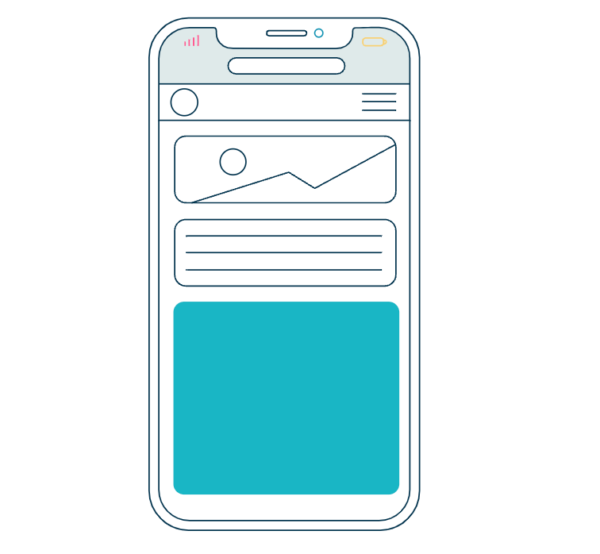
- Rewarded ads.
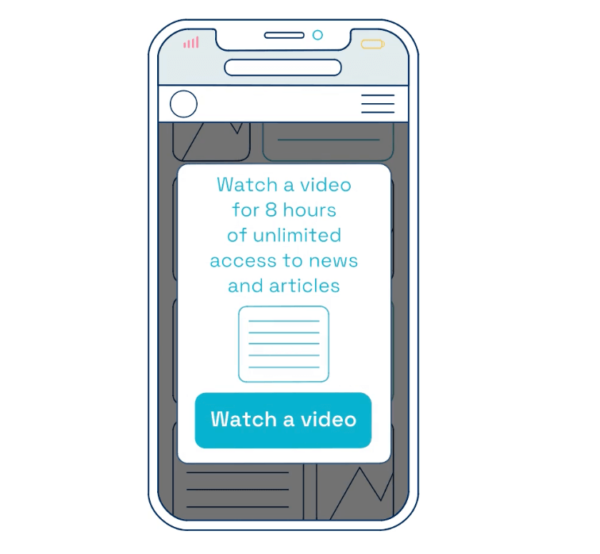
- Playable or in-game ads.

- Native ads.
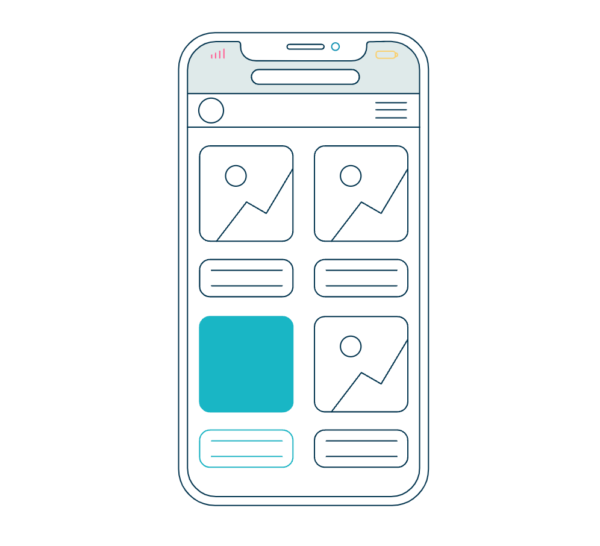
- Interstitial ads.
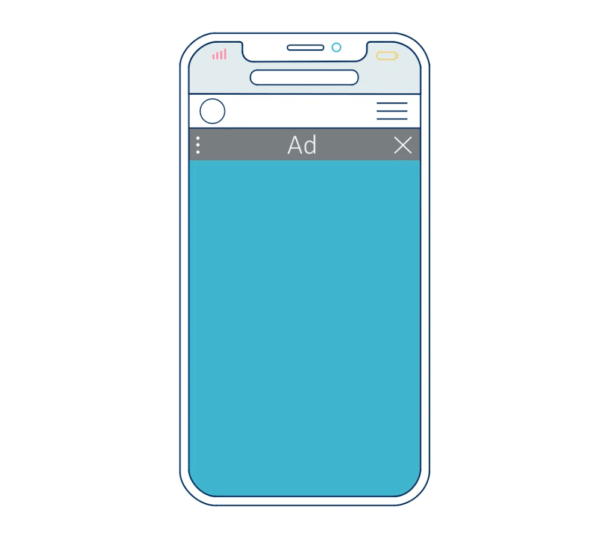
- App open ads.
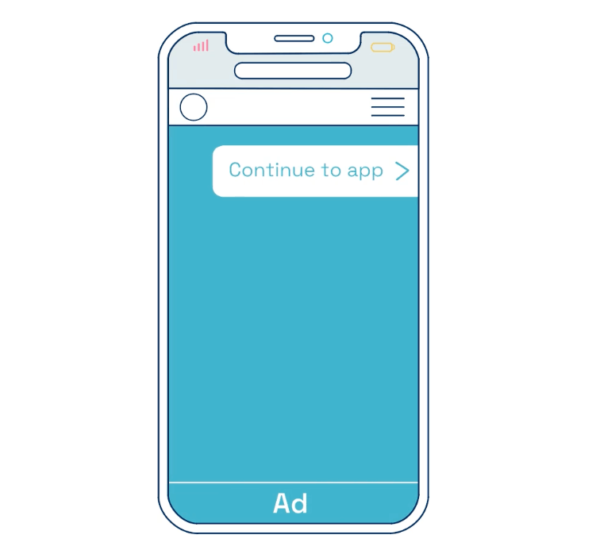
Implementing a Mobile Ad Network
First step to implement a mobile ad network is for a publisher to select one that aligns with their audience and revenue goals. The next step includes the integration of the network’s SDK into their mobile app.
Publishers then configure their preferred ad formats and placements within their app based on the options provided by the ad network. Once set up, the ad network begins to serve ads to the app’s users, targeting them based on the collected data to ensure relevance and effectiveness. Publishers then can monitor ad performance and earnings through the ad network’s dashboard, making adjustments to optimize their ad revenue.
However, different ad networks may have different entry and implementation requierements. If you find an ad network that has caught your interest, make sure to contact their representative for additional support and information.
Note: Often apps use multiple mobile ad networks, including both automated SDK networks and traditional manual networks. You can A/B test different networks or price floors to optimize your strategy over time.
Conclusion
Mobile ad networks benefit publishers by offering a wide range of advertisers, enhanced user engagement, and a more sustainable monetization strategy.
Publishers should choose a mobile ad network that aligns with their needs, audience demographics, and budget while offering user-friendly tools and insightful analytics. It’s also important to compare payout models, ad format diversity, compliance with data privacy standards, and targeting capabilities.
As a publisher, you have the power to elevate your app’s earning potential through the synergy between your content and the chosen ad network—making the right match is key to unlocking this potential.
Frequently Asked Questions (FAQs)
What is the difference between CPC, CPM, and CPA models?
CPC (cost per click) charges advertisers each time a user clicks on their ads. CPM (cost per mille) charges per thousand impressions, regardless of clicks. CPA (cost per acquisition) charges only when a specific action, like a purchase, is completed.
How do I ensure my users’ data privacy with mobile ads?
Ensure that the ad networks you work with are compliant with data protection regulations like GDPR and CCPA. Use clear consent forms for users, anonymize personal data, and be transparent about data usage and sharing.
Can I use multiple ad networks simultaneously?
Yes, publishers can use multiple ad networks simultaneously through a process called mediation, which allows them to fill more ad inventory and maximize revenue while targeting diverse audiences.
How do I measure the success of my mobile ad campaigns?
Measure success using key performance indicators (KPIs) such as CTRs, conversion rates, user engagement metrics, ROAS, and the overall revenue generated compared to the campaign’s cost.


